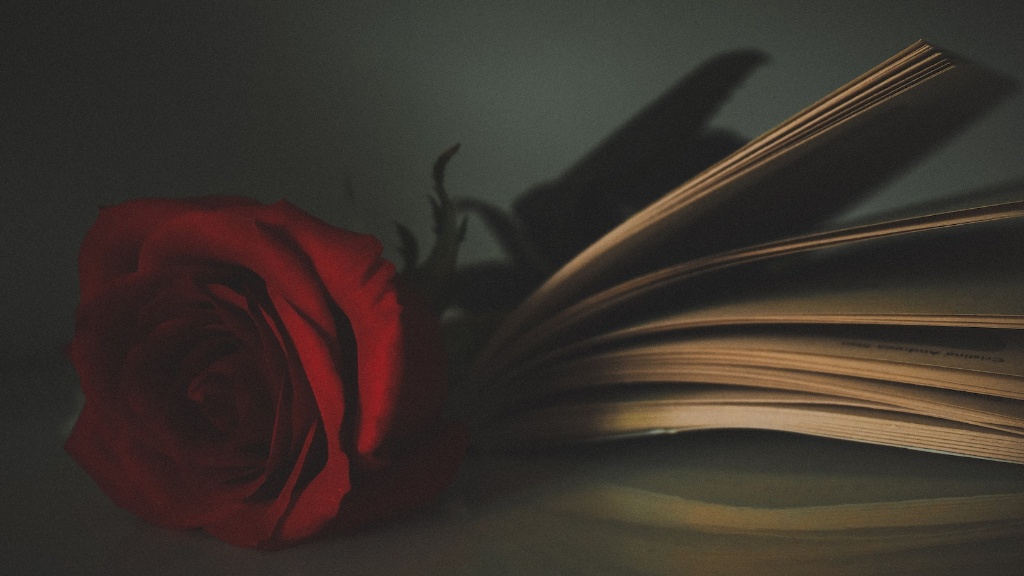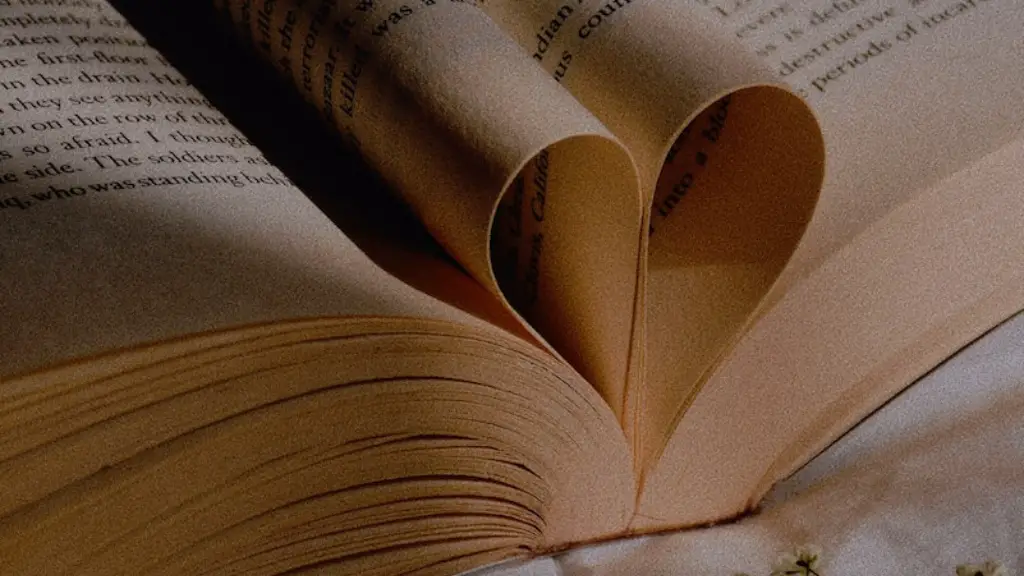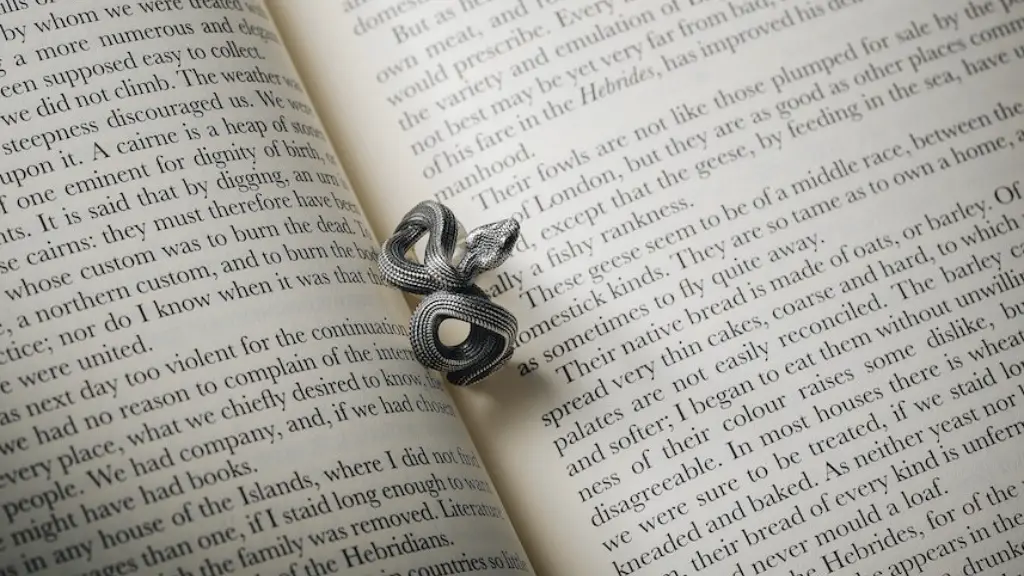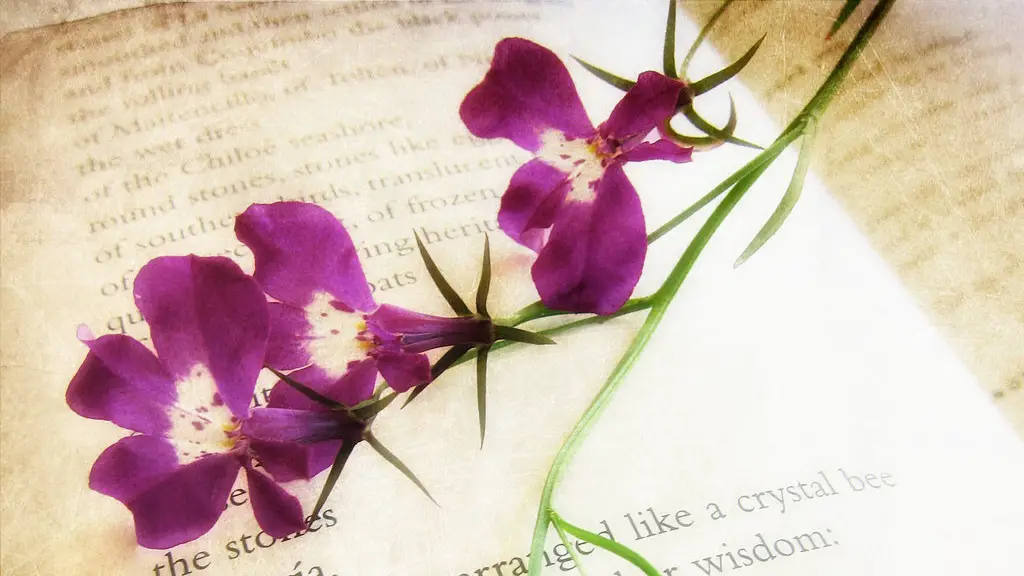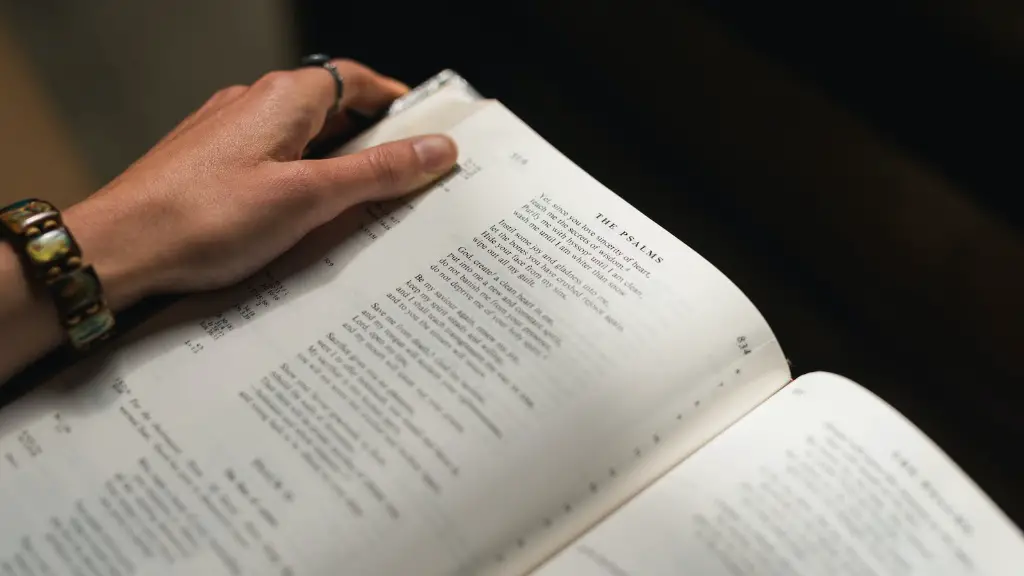Lyric poetry is a type of personal, expressive poetry that is meant to be read out loud. This style of poetry has been around for centuries and is still highly popular today. It has evolved over the years from its origins in ancient Greece, where it was used to express the emotions and thoughts of people in a more direct manner than other forms of writing. The central theme of lyric poetry is that of the inner feelings and emotions of the speaker or the protagonist of the poem. It is often used to communicate the author’s deepest feelings in a very direct and vivid way.
Most lyric poems do not include narrators, characters, or plot elements, instead focusing on the feelings of the speaker or protagonist. The poem usually features imagery and figurative language to create vivid imagery in the mind of the reader. Usually, lyric poems have a regular and flowing rhythm, as well as rhyme, that creates an expressive and emotive effect. Lyric poems are often written from the perspective of the poet and are often confessional in nature.
Experts suggest that lyric poetry is composed of three distinct factors. First, the poem must have a sense of personal expression that conveys the feelings and thoughts of the poet. Secondly, it must include imagery and rhythm that create a vivid and emotive effect within the poem. Lastly, the poem should evoke emotion within the reader or listener.
Lyric poetry has been used throughout the centuries by many famous poets such as William Wordsworth, Emily Dickinson, and Walt Whitman. Many of these poets wrote from their own personal experiences and emotions, which helped to make their works more enjoyable and accessible to many different people. Lyric poetry has also been employed by more contemporary writers, such as Bob Dylan, Tupac Shakur, and Kendrick Lamar.
Lyric poetry can be a powerful way for someone to express their thoughts and emotions. It has been used by many people throughout history and continues to be a popular form of poetry. Many lyric poems are written from the viewpoint of the poet or protagonist, which helps to make them more relatable and emotionally resonant. Lyric poetry is an excellent way to share your feelings and thoughts with others.
Exploring the Purposes of Lyric Poetry
Lyric poetry has been known to serve many different purposes. Some of the most common purposes are to express feelings, to tell a story or to teach a lesson. It has been used to convey powerful feelings of joy, love and sorrow. It can also evoke strong emotions in the reader or listener that can help to create a more meaningful and lasting impression.
Lyric poetry has also been used to tell stories, both real and imagined. It can help to bring a story to life in a vivid and emotive way that cannot be achieved with other literary forms. Many of the most famous stories have been written in this form. For example, Homer’s Iliad, Virgil’s Aeneid, Dante’s Divine Comedy, and Milton’s Paradise Lost are all considered examples of lyric poetry.
Aside from expressing feelings and storytelling, lyric poetry can also be an effective way to teach a lesson or share information. Through vibrant imagery and vivid language, writers are able to communicate powerful messages in a way that speaks to readers or listeners on an emotional level. Famous examples of this include the works of William Blake, who employed verse to communicate his political ideals, and Walt Whitman, who used his work to promote civil rights.
Types of Lyric Poetry
There are many different types of lyric poetry, each with their own distinct features and characteristics. These different types include haiku, sonnets, odes, and ballads. Each type has its own uses and benefits, as well as limitations.
Haiku is a type of lyric poetry that is often written in three lines and follows a 5-7-5 syllable pattern. Haikus have been used to convey powerful ideas and emotions. Sonnets are a type of lyric poem that consist of 14 lines and follow a strict rhyme scheme. Odes are typically longer forms of lyric poetry that are written in an elaborate style to praise a person, thing, or concept. Ballads are more narrative in nature and often tell a story.
No matter what type of lyric poetry you choose to write, it is important to remember that it should be as personal and as vivid as possible. Lyric poetry should evoke emotion within the reader and should be able to convey your personal thoughts and feelings in a direct and meaningful way.
Different Techniques Used in Lyric Poetry
When writing lyric poetry, there are many different techniques that can be employed to make the work more effective. The use of imagery and metaphor can help to create vivid imagery in the reader’s mind. Rhyme and rhythm can create an emotionally resonant effect. Repetition of words and phrases can add emphasis and provide additional insight into the poem’s message.
Using personification can also help to make the poem feel more alive and give it an extra level of depth. This technique is often used to describe abstract concepts in a more nuanced and relatable way. Writing in first person can also be helpful for lyric poems, as it helps to make the subject of the poem more personal and relatable.
Creating lyrical verse can be a challenging yet rewarding endeavor. With patience, dedication, and practice, you can create beautiful and meaningful pieces of lyric poetry that can help to express your thoughts and feelings in a powerful and meaningful way.
Deconstructing Poetic Techniques
When analyzing lyric poetry, it is important to recognize the different elements and techniques used to create the poem. The use of imagery and metaphor can create vivid images in the reader’s mind. The rhythm and rhyme of the poem can help to create an emotive and resonant effect. The repetition of certain words and phrases can help to emphasize certain points and can help to create an emotional response in the reader.
Personification is another technique used in lyric poetry to describe abstract concepts in a more lifelike way. Writing in first person can also help to make the poem more relatable to the reader or listener. These techniques can be deconstructed to identify how the poet is trying to communicate with the reader or listener and can be used to analyze the poem in a more meaningful way.
All of these techniques can be used to create effective lyric poetry. However, it is important to remember that all of these techniques should be used in harmony in order create a powerful and meaningful poem. It is important to have a clear purpose in mind and to write from the heart in order to create truly beautiful and emotive lyric poetry.
The Power of Lyric Poetry
The power of lyric poetry has been celebrated throughout centuries of written history. Its ability to evoke powerful emotions in the reader or listener has made it a timeless form of expression. Whether it is used to express feelings, tell stories, or teach lessons, lyric poetry has endured for centuries and will continue to be used by writers, poets, and musicians alike.
Lyric poetry has always been and will always be a powerful way to communicate in a vivid and emotive way. By utilizing dramatic imagery and figurative language, writers can create vibrant images in the reader’s mind. Through the use of rhythm and rhyme, as well as the repetition of certain words and phrases, lyric poetry can be used to make a lasting impression on its audience.
If you are looking for a way to share your feelings and thoughts in a powerful and poetic way, lyric poetry may be the ideal form for you. With its vivid imagery and powerful emotional resonance, this timeless form of expression can be the perfect vessel for your ideas and sentiments.
The Process of Composing Lyric Poetry
Composing lyric poetry is an intricate, multi-faceted process. The key to creating a successful lyric poem is having a clear purpose in mind and starting with a strong emotional core. Once this is established, the writer should start to flesh out the poem by developing vivid imagery and exploring various rhetorical devices that can help to create a powerful effect. It is important to keep in mind that the poem should always focus on the feelings or thoughts of the writer and use first person whenever possible.
The next step is to decide on a form. Whether it is a haiku, sonnet, ode, or ballad, the chosen form should help to express the feelings and thoughts of the poem in a more meaningful way. After deciding on a form, the writer should consider using figurative language and rhythm and rhyme to evoke emotion in the reader. As the poem is written, the writer should also use repetition to emphasize certain points and create a lasting impression.
The final step is to edit the poem and refine it until it conveys the desired message. Once this is done, the poet should feel confident in the fact that their poem will evoke strong emotions in its audience. Lyric poetry is a powerful form of expression that can help to share your thoughts and feelings in a vivid and meaningful way.
